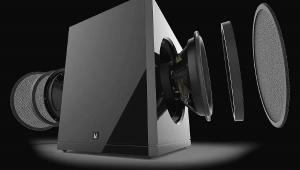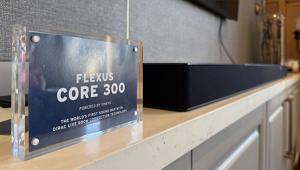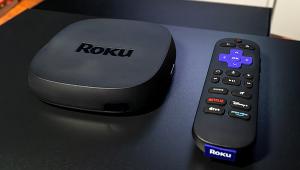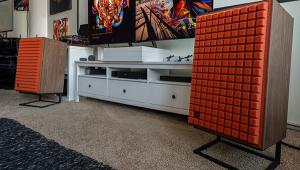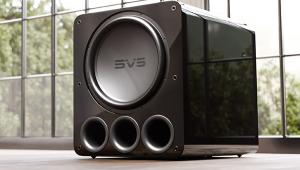Plasma Panorama Page 3
First came the Media Center PC, which computer makers positioned as an all-in-one bridge between a home office and a home theater system. Now those same companies are also selling TVs. HP recently joined Gateway and Dell in offering a line of flat-panel sets. The PL4245N is its lone HDTV-ready plasma model, one that's priced to move and to capture some of the traditional TV makers' market share. 
|
Like the Vizio, the HP has a stripped-down feature set and is low on frills - but it sure looks nice, with a glossy black frame and a silver table stand that doesn't take up too much space. Unlike the Vizio's stand, though, the HP's seems kind of flimsy and forward leaning. After setting it up on my table, I was worried that the TV might fall over (it didn't). If you prefer to hang it on your wall, HP's mount will run you $400, although the TV's thicker-than-usual 5 1/4-inch depth may make you reconsider.
The HP's remote control is essentially the same as the Vizio's. Aside from a few key assignments, the only real differences are that the HP's buttons are black instead of gray and you have to repeatedly press the DVI/VGA key to toggle between those inputs. Unlike other TVs, the HP doesn't make switching sources an instantaneous process - a graphic overlay pops up in the bottom right corner to tell you the TV is "searching for a signal." Bizarre.
The HP doesn't have many picture adjustments beyond the basic options you'd find on any TV, so first-time setup didn't take much work. I was surprised that only a brightness control is provided for the DVI input - with no other controls, I had to make most picture tweaks using the DVD player's adjustments. Testing out the set's burn-in-prevention mode, I was also surprised to see the picture making dramatic shifts every few seconds. It was actually jumping around the screen! Normally, the process is more subtle. 
Standard TV images (through the analog video inputs) had fairly severe edge enhancement, or a faint "halo" on transitions from dark to light. The effect was visible even with the sharpness control set to minimum but disappeared when I switched to the DVI input. With the Warm color temperature selected, I still needed to make some more advanced adjustments (click to see "in the lab" PDF).
Watching Sky Captain with the Bravo player's DVI output hooked up to the HP, I found picture quality a mixed bag. The near-monochrome images - inspired by old movie serials - looked crisp, and the shadows reached down to a deep shade of black. But the same false contouring that I saw on the Vizio was also visible on the HP. Shadows falling on Polly's face in the movie-theater scene were divided into a coarse ramp of flat bands, and the walls and curtains in the background also looked patchy.
False contours weren't as much of a problem when I watched HDTV programs, although they did show up fairly regularly. Watching CSI , I was impressed by a scene where Grissom, his supervisor, and a young lab tech walk together through the lab's winding hallways. The HP conveyed the subtle details in their dark clothing as they passed in and out of shadows. And in a scene from ESPN's drama Tilt where a detective questions a suspect in an aquarium, the colorful exotic fish looked vibrant, and the rocks and coral were realistically detailed. There was still some edge enhancement when I used a component-video connection to the TV, although it wasn't as noticeable with high-def.
At $4,000, HP's PL4245N is a step up in price from the Vizio but is still one of the more affordable high-def plasmas. But then again, its hit-or-miss video performance and limited setup options actually make it less of a bargain than the Vizio. HP has hinted that a price drop is imminent for the PL4245N. When that happens, this 42-inch plasma HDTV may be worth a second look. PDF: Features Checklist PDF: In the Lab
- Log in or register to post comments
 PICTURE QUALITY
PICTURE QUALITY









